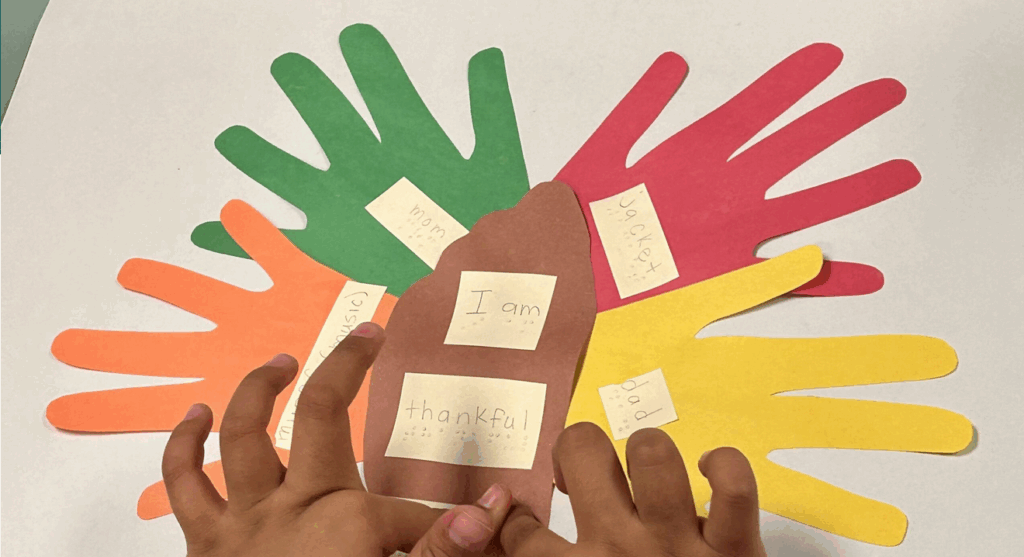Involving your child in Thanksgiving planning and chores requires preparation, clear communication, flexibility, and adapting tasks to their interests and sensory needs.
Planning the day
- Prepare in advance: Discuss Thanksgiving plans several days or weeks beforehand to build predictability, reduce stress (for both of you), and create a plan.
- Use a schedule: Create a schedule if your child often gets out of sorts on non-routine days to outline the day’s events (e.g., “guests arrive,” “eat dinner,” “quiet time,” “play games”). Review it with your child and let them know when transitions will happen.
- Offer Choices: Give your child a sense of control by offering choices in planning, such as selecting which simple craft to do, helping choose a movie for later, or deciding on a favorite dish to include in the menu.
- Create a Social Story: Write a simple narrative (social story) explaining what happens on Thanksgiving, who will be there, and what they might see, hear, or smell.
- Incorporate Interests: Leverage their special interests. If they love organization, they might enjoy making place cards (in braille, use of pictures, or large print), if they like building, they could help arrange a centerpiece. Have them cook or bake a dish for dinner if they enjoy being in the kitchen. They can also create a Thanksgiving trivia game to play.
Make the tasks meaningful
Pick tasks that are level and age appropriate and help create a better Thanksgiving. Break tasks into smaller, manageable steps, and offer positive reinforcement for their efforts.
Food preparation
Washing vegetables, stirring ingredients, kneading dough, setting out appetizers.
Table setting
Folding napkins, putting silverware/utensils in the correct places, handing out napkins, creating place cards.
Use a guide or a labeled placemat to show where items belong and have them prepare a menu for each guest.
Decorating
Creating simple Thanksgiving crafts (e.g., a “thankful tree” with written or drawn leaves), arranging simple decorations, or drawing on a butcher-paper tablecloth.
Focus on the process, not perfection. Provide sensory-friendly materials like felt, soft fabrics, or natural items (acorns, leaves).
Post meal clean-up
Have them help with wiping the table, clearing non-breakable dishes, helping feed a pet, or loading the dishwasher. Use a timer to indicate when clean-up starts and ends. If noise is an issue, let them use noise-canceling headphones or take a quiet break.
Managing for success
Allow choices: Guide your child to meaningful tasks but still give them a sense of control.
Be consistent and predictable: Consistency is vital. Ensure that everyone involved in the Thanksgiving activities follows the same reinforcement system and expectations to reduce confusion and anxiety.
Break down tasks: Use task analysis to break complex chores into small, manageable steps. Reinforce each completed step, rather than waiting for the entire chore to be finished.
Model behaviors: Let your child see other family members participating in chores and receiving positive reinforcement. This normalizes the process and promotes teamwork.
Visiting another home for Thanksgiving
Not hosting Thanksgiving dinner? No worries, all these ideas can be adapted to meet your individual needs. That can include making a side dish, helping with clean-up, bringing a decoration, creating a social game or discussion: I am thankful for…
Creating memories for everyone
Your family time is precious and can be a time when you not only enjoy each other’s company but share in a way that makes everyone feel included and loved.





